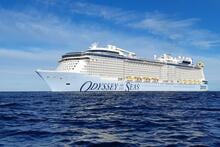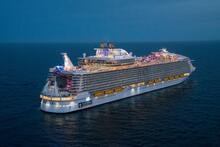Cruise ships are giant pieces of modern engineering marvels, and they also take years before they're built
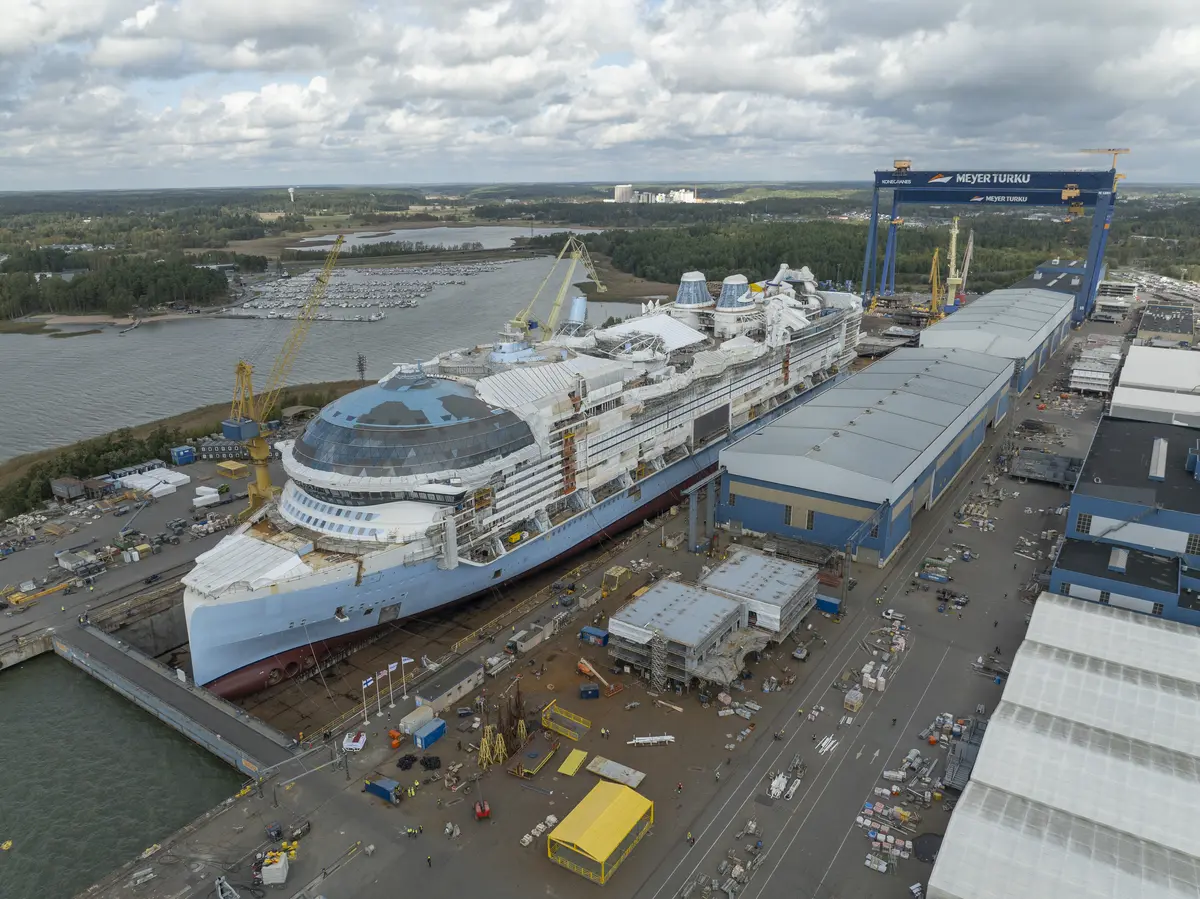
No matter which cruise ship you're talking about, the time from start to finish is lengthy and involves many steps.
As an example, it took Royal Caribbean a total of 7 years to build Icon of the Seas, including design and construction.
How long it takes to build a cruise ship depends on when you start measuring. It usually takes about 12 to 18 months for a cruise ship to be built, depending on a few factors.
The process of building a cruise ship goes back much further, and in many cases, the start of a cruise ship's life is not known to the public.
Cruise lines will often wait months or years before announcing a new ship to the public. In the case of cruise lines that are publicly traded companies, they have to divulge the existence of the project because significant money is required to be financed to pay for them.
Icon of the Seas was first announced as a new ship back in October 2016, and the initial concept and early planning occurred well before then.
The ship finally began service in January 2024.
Step 1: Placing an order
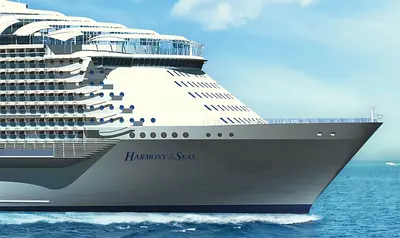
Before any steel can be cut to build a new cruise ship, an order has to be placed.
New cruise ships are expensive, and shipyards don't work on promises. So what typically happens is a cruise line will get funding for a new ship to coincide with a new ship order.
Most, if not the entire amount of the ship is borrowed from one or many financial institutions. It's a lot like getting a mortgage for a house. Banks lend the money because they feel the cruise line is capable of paying back the loan due to the lucrative nature of the cruise industry.
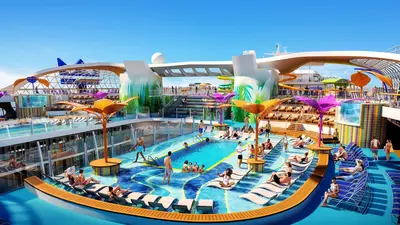
Cruise ships aren't cheap either. New Royal Caribbean cruise ships now easily cost one billion dollars. Icon of the Seas has an estimated construction cost of $2 billion, which makes Icon one of the most expensive cruise ships ever built.
Of course, paying back that money isn't something to languish. In the case of Oasis of the Seas, the loan amortized over 12 years.
In some cases, the public is told basic information about the ship and in other cases, very little. In almost every case, many more details come out later in the process.
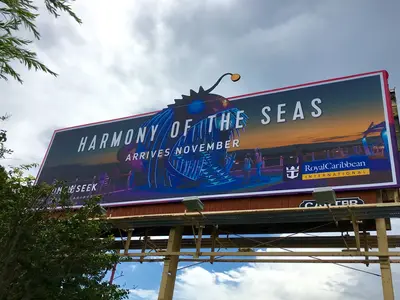
There's two reasons to hold back information: competitive advantage and marketing.
By taking months to announce ship details, it gives less time for other cruise lines to match. Plus, taking longer to announce information generates more interest among the public over time.
Step 2. Steel cutting
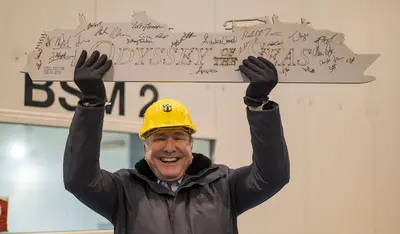
Actual construction of the cruise ship doesn't begin until months after the contract is signed.
When the first piece of steel is cut, it marks a pivotal point in the ship building process, setting off an array of crucial landmarks to follow. This major milestone indicates that the groundwork has been set and the foundations have been laid for any further adjustments.
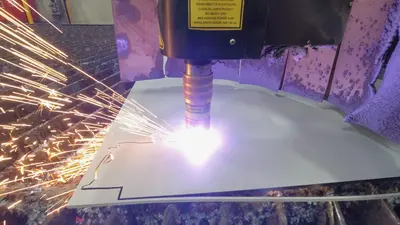
Icon of the Seas had its steel cutting ceremony on June 16, 2021. That's almost five years after the original announcement!
This is as much a ceremonial event as it is a step in the process, with executives from the cruise line meeting at the shipyard for plenty of photos.
By this point, the ship name and basic details will be announced to the public.

With the first piece of steel being cut, building a cruise ship doesn't begin at the bottom and you work your way up. Rather, smaller pieces of the ship are assembled so that they can be put together later.
Each of these blocks is pre-assembled elsewhere, and there can be as many as 80 blocks per ship.
Cruise ships are built in a module process, where engineers break down the ship into smaller pieces that they later assemble. The reason ships are built in this manner is so that different engineers and specialists can work simultaneously, which cuts down on overall construction time.
Tug boats brought these giant pieces of what will become the hull of the ship to the shipyard so that they can be joined together.
Step 3: Keel laying
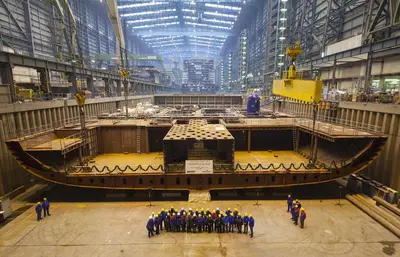
As those blocks get assembled, eventually there's enough of them in the shipyard to start putting things together.
The ship's keel is the first block, and it is maritime tradition to commemorate this phase of a new ship construction. Think of the keel as the "base" to build the rest of the ship on top of it.
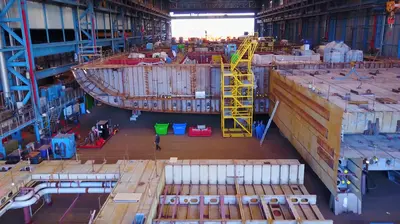
Just like steel cutting, this is another big to do, and there's a ceremony involved. Executives from the shipyard and the cruise line meet to celebrate.
Royal Caribbean held the keel laying ceremony for Icon of the Seas in April 2022, which means it took about 10 months. Keep in mind that Icon of the Seas' construction was delayed due to the global health crisis of 2020, so the ship might have been completed a year earlier under normal circumstances.
With the keel laid, now the ship will begin to look like a sea going vessel. Blocks are welded together and you get a bigger and bigger vessel.
Step 4: Float out
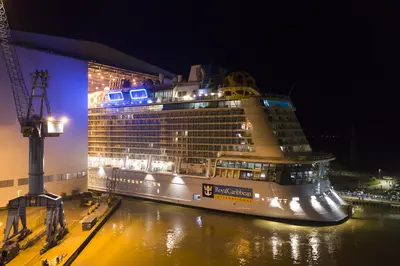
As the blocks are are joined and the ship becomes more than a bunch of blocks, the ship will reach a point where it's time to put her in water.
This process is referred to as a float out, and it's when the dry dock is filled with water and it becomes a wet dock. It's also the first time the ship floats.
Icon of the Seas had her float out in December 2022 and it culminated the work of more than 10,000 people.
At this point in construction, a new ship could move to a new location in the shipyard to the outfitting dock for the rest of the construction to be completed. This is when all parts of the ship get assembled, and more features get added.
The float out can take many hours. In the case of Utopia of the Seas, it took 15 hours to complete and more than 46 million gallons of water added overnight.
Step 5: Sea trials
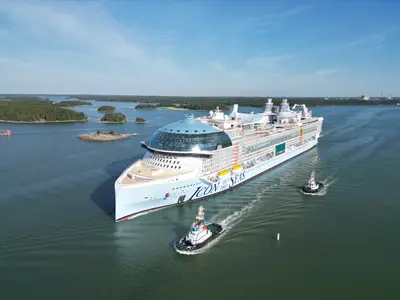
Once the ship starts coming along and it has its primary systems installed, it will be ready for sea trials.
The ship isn't ready yet, but it's important to ensure it can sail and operate nominally before it's ready to be handed over to the cruise line. Think of it like a test drive that takes a few days.
If it's a new ship in a class, then more is done in sea trials than a subsequent ship in a class. That's because a new class is an unknown, and more testing is needed to determine the ship's limits.
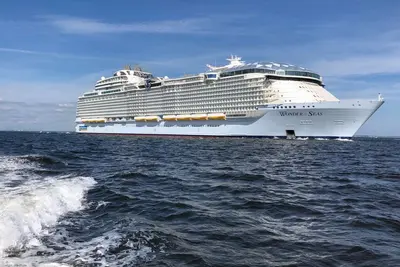
When sea trials take place, hundreds of specialists run tests to help assess different technical areas of the ship, and there were more than 450 specialists who helped to run the four days tests on the ship’s technical areas during this round of sea trials.
Icon of the Seas had her first sea trials in June 2023, where the main engines, hull, brake systems, steering, noise, and vibration levels were all tested.
Between preparing for the trial and the tests themselves, there were over 2,000 specialists who put in more than 350 hours of work in helping Icon of the Seas pass this important milestone.
Then in November 2023, Icon took her second set of sea trials. During this test, the ship's noise, vibration, speed, fin stabilizers, automation, and main engine adjustments were tested.
When sea trials are complete, the ship isn't quite ready yet. There's still more work and some final work to be done before it's handover.
Step 6: Delivery
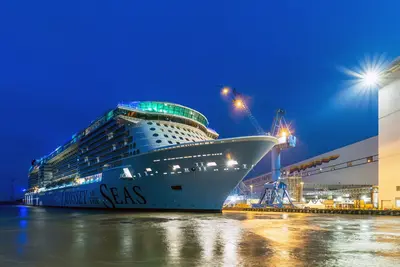
The final stage of cruise ship construction at the shipyard is the delivery when the cruise takes ownership of the ship.
During the construction process, the shipyard is responsible for the vessel, but at delivery, that onus falls to the cruise line.
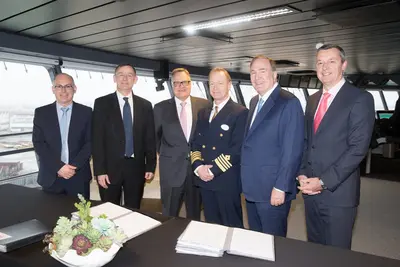
As you might imagine, delivery is a big deal and a celebration. It's the culmination of years of construction, and so executives from the cruise line and shipyard are present to celebrate.
Icon of the Seas was delivered on November 6, 2023, exactly 873 days after the first piece of steel was cut. That's 2 years, 4 months, 21 days.
Step 7: Finalization
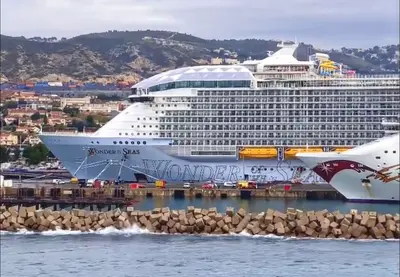
The ship might look complete when you photograph it from the outside, but there's still more work to do. The construction process is complete, but the ship isn't ready.
Soft furnishings need to be added, crew members recruited and brought onboard to staff up the vessel, artwork brought onboard and more.
Royal Caribbean typically moves its ships to a different site to complete this work. Icon of the Seas moved to Cadiz, whereas Wonder of the Seas went to Marseilles, France.
It's possible some work could continue during this process. Shows, restaurants, or entertainment might need to wait for deliveries or be refined still.
Step 8: Shakedown cruises
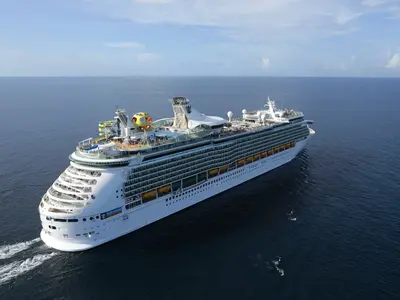
At this point, the ship is mostly ready, but the cruise line will want to test everything. Think of it like a dress rehearsal before a show opens on Broadway.
The ship could take a series of very short cruises with guests onboard as a way to test everything out. It allows the crew members real-world experience to do their job, and identify any issues before the public gets onboard.
Usually, shakedown cruises have cruise line employees and their families as the passengers. You can't pay to get on one of these cruises.
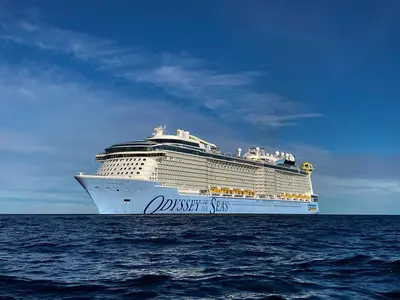
Shakedown cruises can also double as a preview sailing for travel agents and members of the media. There will be more passengers, but the ship likely won't be totally full yet.
The point of these short sailings is to run through everything, promote the ship from a marketing perspective, and celebrate reaching the finish line.
Step 9: Christening
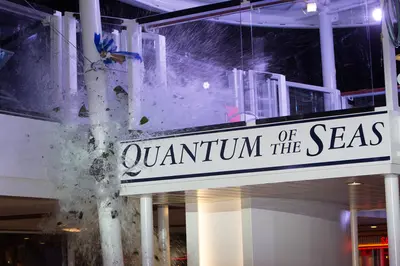
The maritime industry is very traditional, and no ocean going vessel is seaworthy until it's christened.
The christening involves members of the clergy, music, media, and the ship's Godmother.
Every cruise ship has a godmother, which serves as a ceremonial position.

Women have traditionally held the role, including renowned athletes, celebrities and royalty.
The godmother's job is to give the ship a blessing for the safety of the crew members and passengers who will sail onboard it. This is done by smashing a bottle of Champagne against the bow.
Step 10: Maiden voyage
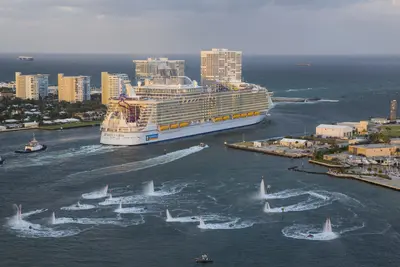
The inaugural voyage is the first official cruise with paying passengers.
It might be a short sailing again, a transatlantic, or a 7-night cruise. It all depends on the timing.
Maiden voyages are a big deal and it means the ship is ready for regular service with passengers and it's a giant party. Cruise fans know how important the first sailing is, just as much as the cruise line. It's like a birthday, homecoming, and New Years Eve rolled into one.


